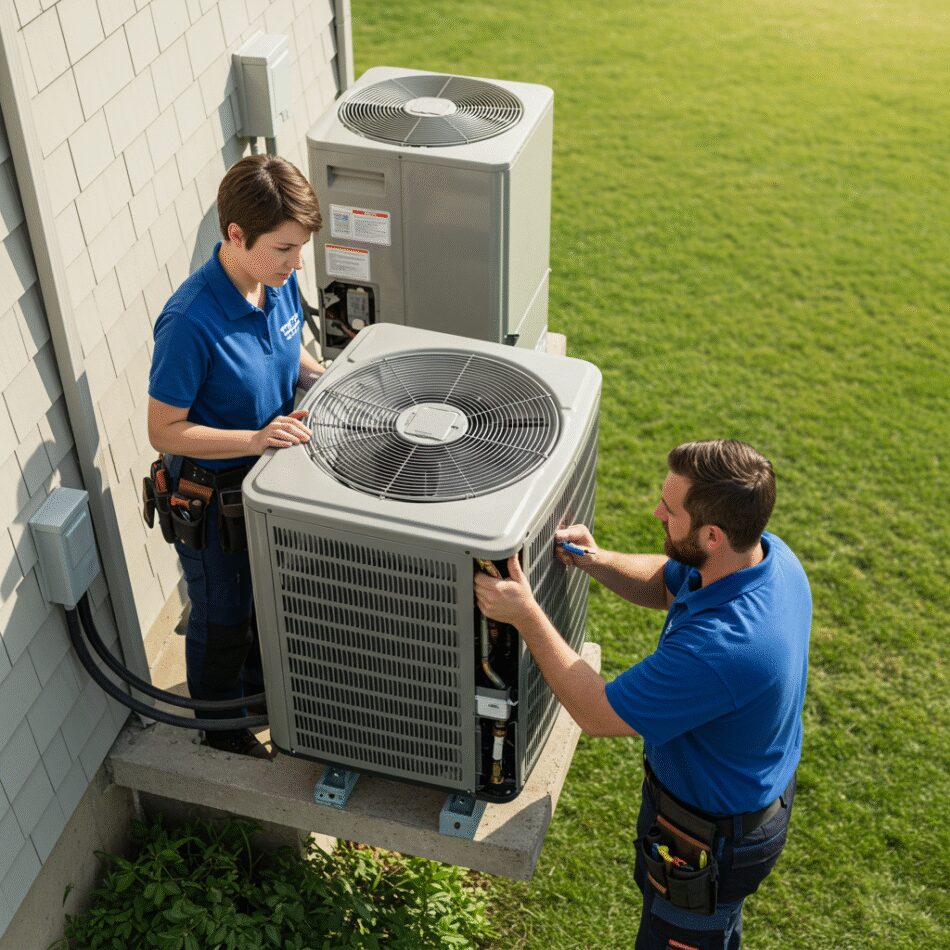The Complete Guide to Professional Air Conditioning Installation: What Every Homeowner Needs to Know
As temperatures continue to rise globally, having an efficient cooling system is no longer a luxury but a necessity. Whether you’re building a new home or upgrading an existing system, understanding the intricacies of air conditioning installation can save you thousands in energy costs and prevent costly repairs down the line.
This comprehensive guide will walk you through everything from selecting the right air conditioning installer to maintaining your system after installation. We’ll also explore different types of air conditioning installations and provide expert tips to ensure you get the best performance from your investment.
Why Professional Air Conditioning Installation Makes All the Difference
Many homeowners underestimate the complexity of proper air conditioning installation, often leading to:
- 30% higher energy bills from improperly sized units
- Frequent breakdowns due to incorrect refrigerant charging
- Reduced lifespan from poor placement and airflow
Certified air conditioning installers bring specialized knowledge that ensures:
1. Precision Sizing Calculations
Professional installers perform Manual J load calculations (not just square footage estimates) to determine the exact capacity needed for your:
- Home’s orientation and sun exposure
- Insulation quality and window types
- Local climate conditions
2. Optimal System Placement
The difference between amateur and professional air conditioning installations often comes down to placement:
- Outdoor units positioned for maximum airflow and service access
- Indoor components placed for even air distribution
- Proper clearances maintained as per manufacturer specifications
3. Comprehensive Ductwork Evaluation
For central systems, a skilled air conditioning installer will:
- Perform duct leakage testing (many homes lose 20-40% of cooled air)
- Balance airflow between rooms
- Recommend sealing or replacement if needed
The Step-by-Step Process of Professional Air Conditioning Installations
Phase 1: Pre-Installation Assessment
- Home Energy Audit – Using thermal imaging to identify heat gain areas
- System Selection – Choosing between:
- Central AC systems
- Ductless mini-splits
- Heat pump hybrids
- Permitting – Handling all local code requirements
Phase 2: Installation Day
A typical professional air conditioning installation includes:
- Morning Preparation (8-9 AM):
- Protective floor coverings laid
- Electrical shutoffs confirmed
- Equipment Setup (9 AM-12 PM):
- New condenser pad installation
- Refrigerant line routing
- Drain line configuration
- Afternoon Completion (1-4 PM):
- Thermostat wiring and programming
- System startup and testing
- Homeowner orientation
Phase 3: Post-Installation Verification
Reputable companies provide:
- 30-day follow-up inspection
- First-year maintenance inclusion
- Performance benchmarking
5 Critical Mistakes in DIY Air Conditioning Installations
- Wrong BTU Selection – Oversizing causes humidity issues, undersizing leads to constant running
- Improper Refrigerant Handling – Requires EPA certification to avoid leaks or overcharging
- Electrical Errors – Incorrect wiring can damage compressors or create fire hazards
- Poor Drainage Setup – Leading to water damage and mold growth
- Voided Warranties – Most manufacturers require licensed professional installation
How to Choose the Best Air Conditioning Installer
Credentials to Verify:
- NATE (North American Technician Excellence) certification
- EPA Section 608 certification for refrigerant handling
- Local business licensing and insurance
Questions to Ask:
- “Can you provide references from recent air conditioning installations?”
- “What’s your process for determining system size?”
- “Do you offer any installation warranties beyond manufacturer coverage?”
Red Flags to Avoid:
- Quotes significantly lower than competitors
- Pressure to reuse existing incompatible components
- No physical business address
The Hidden Benefits of Professional Air Conditioning Installations
Beyond basic cooling, modern systems installed correctly provide:
- Improved Air Quality – Advanced filtration removing allergens
- Smart Home Integration – Compatibility with Alexa/Google Home
- Zoned Cooling – Independent temperature control for different areas
- Increased Home Value – Proper documentation adds to resale appeal
Maintenance Tips After Your Air Conditioning Installation
To protect your investment:
- Monthly filter changes during peak season
- Annual professional tune-ups (best scheduled in spring)
- Keeping 2 feet clearance around outdoor units
- Monitoring for unusual sounds or performance changes
Future Trends in Air Conditioning Installations
The industry is evolving with:
- R32 Refrigerant systems (more eco-friendly)
- Inverter Technology for consistent temperatures
- Solar-Powered AC options becoming mainstream
- AI Optimization that learns usage patterns
Conclusion: Why Expertise Matters in Air Conditioning Installation
While the upfront cost of professional air conditioning installations may be higher than DIY attempts, the long-term savings in energy bills, repair costs, and equipment lifespan make it the smarter choice. A qualified air conditioning installer doesn’t just connect equipment – they engineer a complete climate solution tailored to your home’s unique requirements.








